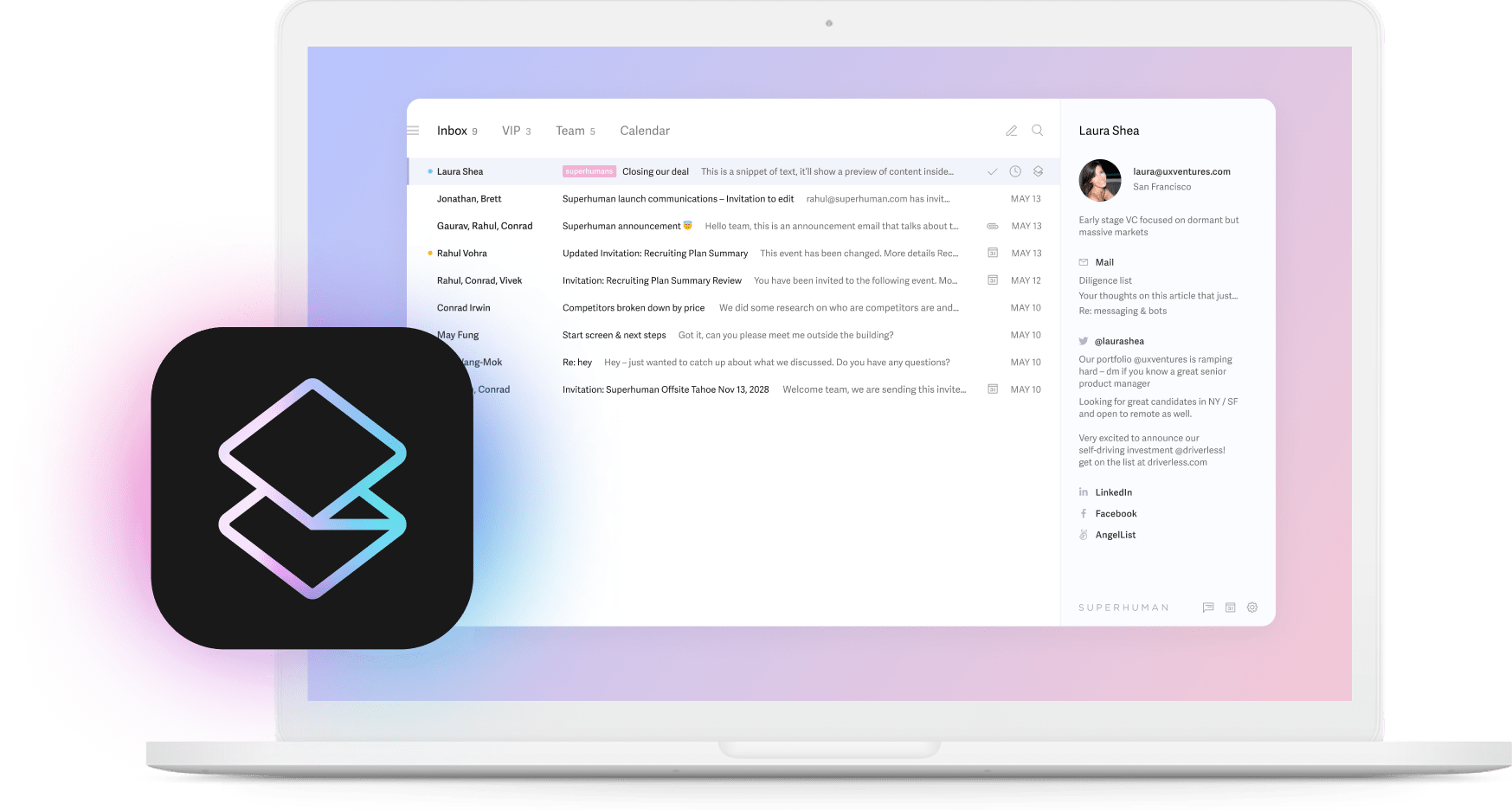
Building a customer success management team is a critical step for a growing business — but it’s no small feat. Customer success management is pivotal to reducing churn, driving revenue growth, and creating brand advocates who'll sing your praises.
This article will guide you through the process of building a robust customer success management team. We'll cover everything from defining your strategy and hiring the right people to implementing tools and processes to drive your business forward.
What is customer success management?
Customer success management is responsible for proactively ensuring customers achieve their desired outcomes while using your product or service.
Unlike traditional customer support, which is reactive, customer success management focuses on anticipating customer needs and creating value throughout the customer lifecycle.
Why is customer success management important?
Effective customer success management can significantly impact your bottom line by:
- Reducing churn
- Increasing customer lifetime value
- Driving revenue growth through upsells and cross-sells
- Creating brand advocates
By implementing strong customer success management practices, you're not just solving problems — you're actively helping customers succeed, which in turn fuels your business growth.
How to build a team for effective customer success management
Here's what to keep in mind when building your team.
1. Define your customer success strategy
The first step in building a customer success team is to define your strategy. This strategy should align closely with your overall business goals and be tailored to meet the specific needs of your key customer segments.
Start by identifying your most valuable customer segments. Consider factors like revenue potential, strategic importance, and growth opportunities. Once you've identified these segments, take the time to understand their unique needs, challenges, and goals.
Next, create a customer journey map. This visual representation of the customer's experience with your product or service will help you identify key touchpoints and opportunities for your customer success team to add value.
Use this map to guide your strategy development, ensuring that your team is positioned to support customers at every stage of their journey.
2. Hire the right people
Look for candidates with technical knowledge, communication skills, and empathy. All three are crucial since team members should be able to understand your product deeply, explain complex concepts clearly, and genuinely care about your customers' success.
That said, consider building a diverse team with complementary strengths. Some team members might excel at data analysis, while others might have specific industry experience or be particularly skilled at building relationships. This diversity will allow your team to effectively tackle a wide range of customer needs.
Also, don't forget to consider remote and hybrid work models in your hiring process. Look for candidates with strong self-motivation and excellent virtual communication skills who can thrive in these environments.
3. Establish key metrics and goals
Establishing clear metrics and goals for your customer success team is crucial for driving success and measuring progress.
Some key metrics to consider include:
- Customer retention rate
- Net Promoter Score (NPS)
- Customer Lifetime Value (CLV)
- Expansion revenue
- Time to value
Set SMART goals (specific, measurable, achievable, relevant, time-bound) based on these metrics. For example, "Increase customer retention rate from 85% to 90% within the next 12 months."
Implement data-driven decision-making processes to track these metrics and adjust your strategy as needed. Regular reviews of these metrics will help you identify trends, spot potential issues early, and capitalize on opportunities for improvement.
4. Implement the right tools and processes
Equipping your customer success team with the right tools is crucial for efficiency and effectiveness. Consider implementing a dedicated customer success platform that allows you to track customer health, manage communications, and analyze key metrics all in one place.
Look for tools that integrate well with your existing tech stack, including your CRM, support ticketing system, and product analytics tools. This integration will provide a holistic view of each customer, enabling your team to provide more personalized and effective support.
Don't overlook the power of AI and automation in enhancing your team's efficiency. Tools that can automate routine tasks, provide predictive analytics, or offer intelligent recommendations can significantly boost your team's productivity and effectiveness.
Establish clear workflows and standard operating procedures for your team. These might include processes for onboarding new customers, conducting regular check-ins, or escalating issues when necessary. Document these processes and ensure they're easily accessible to all team members.
5. Create a customer onboarding program
A smooth onboarding experience sets the tone for the entire customer relationship. Design an onboarding program that quickly demonstrates the value of your product and sets customers up for long-term success.
Personalize the onboarding experience based on your customer segments. A large enterprise client might need a more hands-on, consultative approach, while a small business might benefit from a more self-serve model with targeted resources.
Measure the success of your onboarding program using metrics like time to first value, initial product adoption rates, and customer satisfaction scores immediately post-onboarding. Use these insights to continually refine and improve your onboarding process.
6. Develop ongoing customer engagement strategies
Customer success doesn't end after onboarding. Develop strategies for ongoing engagement to ensure customers continue to derive value from your product over time.
Implement a system of proactive outreach and regular check-ins. These touchpoints allow you to gauge customer satisfaction, identify potential issues before they become problems, and uncover opportunities for expanded product usage.
Create valuable content and resources for your customers. This might include how-to guides, best practice documents, or case studies showcasing innovative ways to use your product. Not only does this help customers get more value from your offering, but it also positions your company as a thought leader in your industry.
Implement customer feedback loops to continuously improve your product and service. Regular surveys, user testing sessions, and advisory boards can provide valuable insights into customer needs and pain points.
7. Foster cross-functional collaboration
Customer success doesn't exist in a vacuum. To be truly effective, your customer success team needs to work closely with other departments across your organization.
Align your customer success team with sales, product, and support teams. Regular meetings and shared goals can help ensure everyone is working towards the same objectives. For example, your sales team can provide valuable context about new customers, while your product team can benefit from the customer insights gathered by the success team.
Facilitate effective communication between departments. This might involve implementing shared communication channels, regular cross-functional meetings, or collaborative project management tools.
Encourage the sharing of customer insights across the organization. The customer success team often has the most direct and ongoing contact with customers, making them a valuable source of information for product development, marketing initiatives, and overall business strategy.
How to scale your customer success management team
As your business grows, you'll need to scale your customer success team to meet increasing demands. Identifying the right time to expand can be challenging, but some signs include increasing response times, declining customer satisfaction scores, or team members consistently working overtime.
Leverage technology to increase efficiency and reach. AI-powered chatbots, for instance, can handle routine inquiries, freeing up your team to focus on more complex issues. Similarly, automated email sequences can help maintain regular touchpoints with a growing customer base.
Consider implementing a tiered customer success model as you scale. This approach allows you to provide varying levels of support based on customer value or needs.
For example, your highest-value customers might receive dedicated account managers, while others might primarily interact with your team through self-service resources and periodic check-ins.
Invest in continuous training and development for your team members. As your product evolves and your customer base grows, ensure your team stays up-to-date with the latest features, industry trends, and best practices in customer success management.
Empowering customer success management with Superhuman
Superhuman is the most productive email app ever made. It helps customer success management teams move faster and focus on what matters, with features like:
- Superhuman AI: Like a truly great assistant, Superhuman AI is constantly helping you. Organizing your inbox. Drafting and sending fully written emails. It can even execute complete workflows, end-to-end, so you don’t have to.
- Split Inbox: Group emails to manage multiple customer segments and prioritize high-value interactions.
- Shared Conversations & Team Comments: Share a live view of any email with your team, collaborate within Superhuman or via a link, and comment directly on the email.
- Team Snippets: These templates save you time without having to reinvent the wheel. Easily share existing workflows, best practices, and quickly access important documents and information.
- Instant Reply: We show three draft replies under each conversation. You would simply edit, then send. Sometimes, you wouldn't even edit.
Sign up for Superhuman today and your team will save four hours per person every single week.






